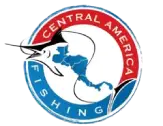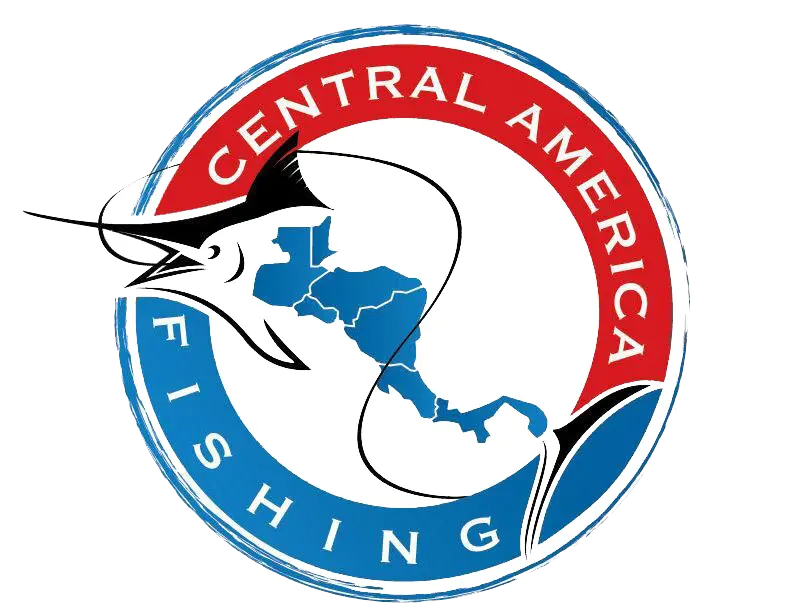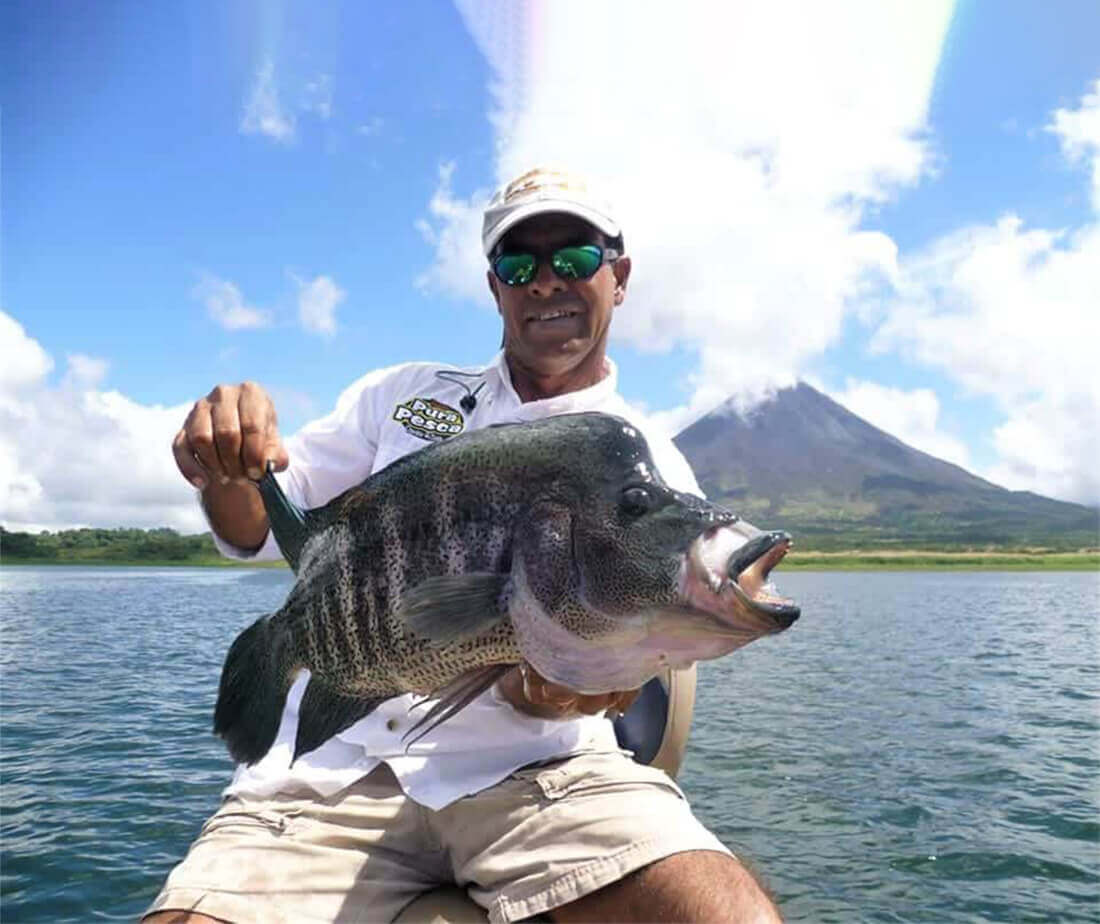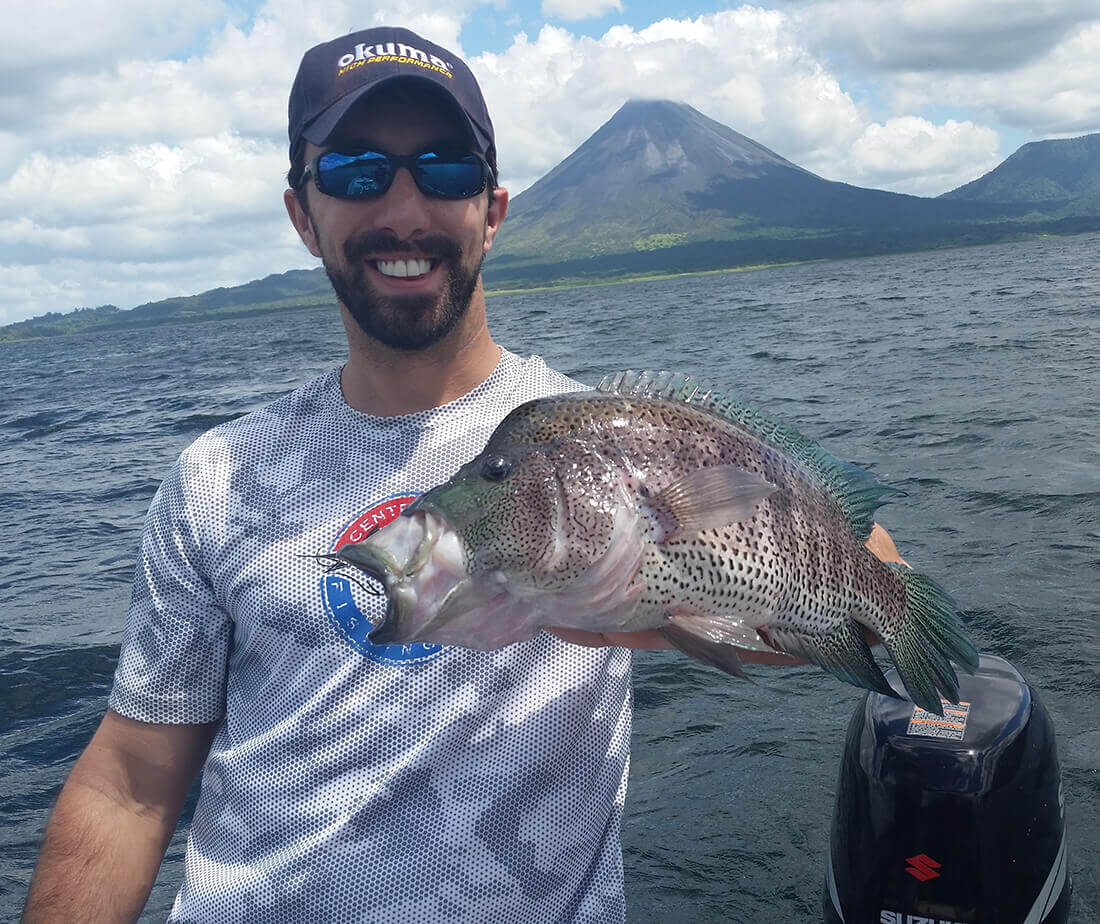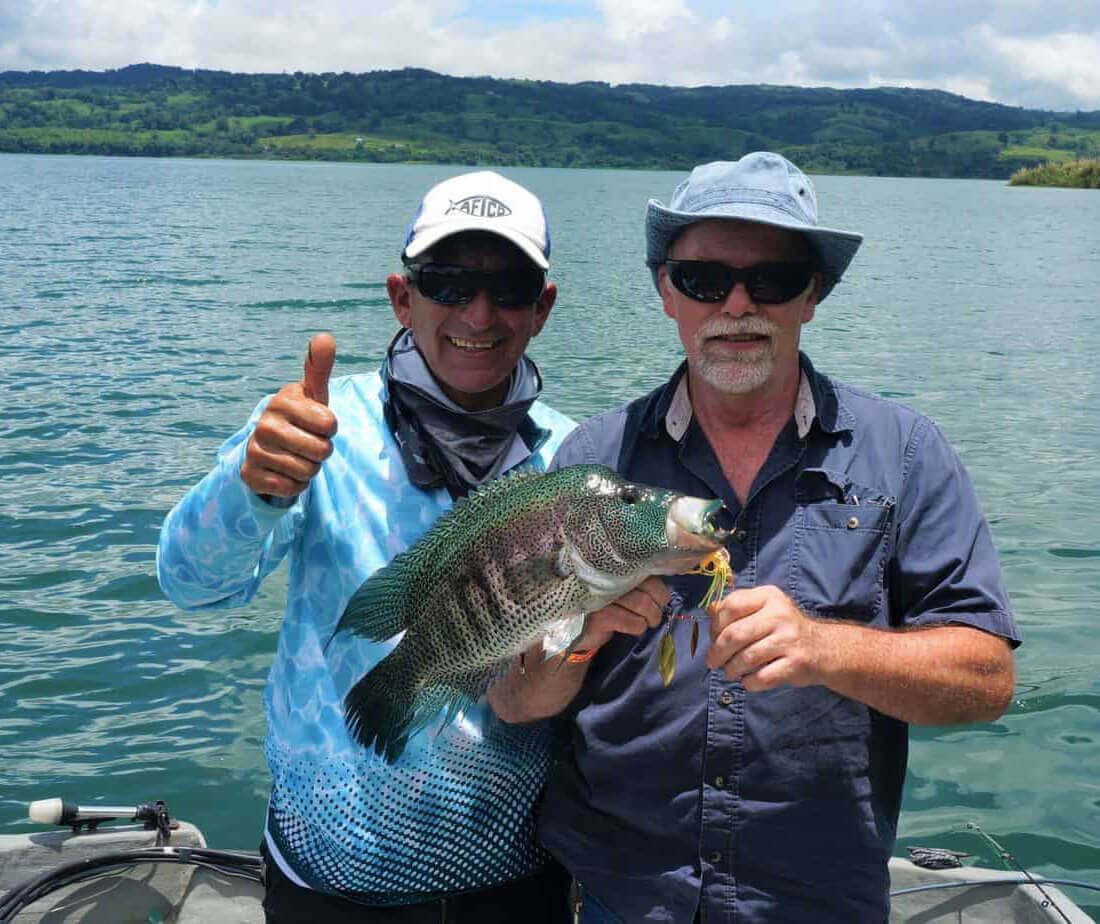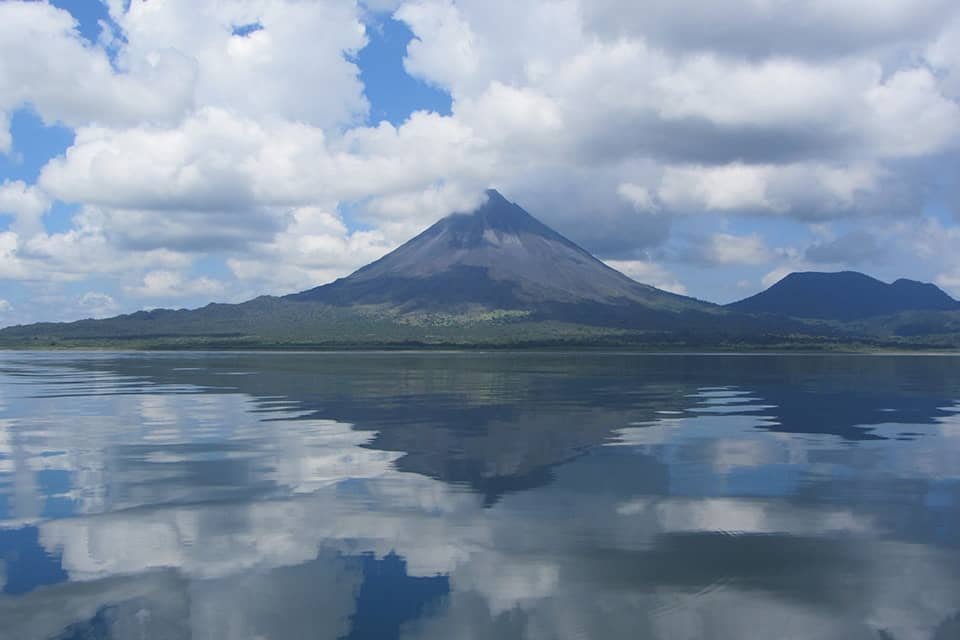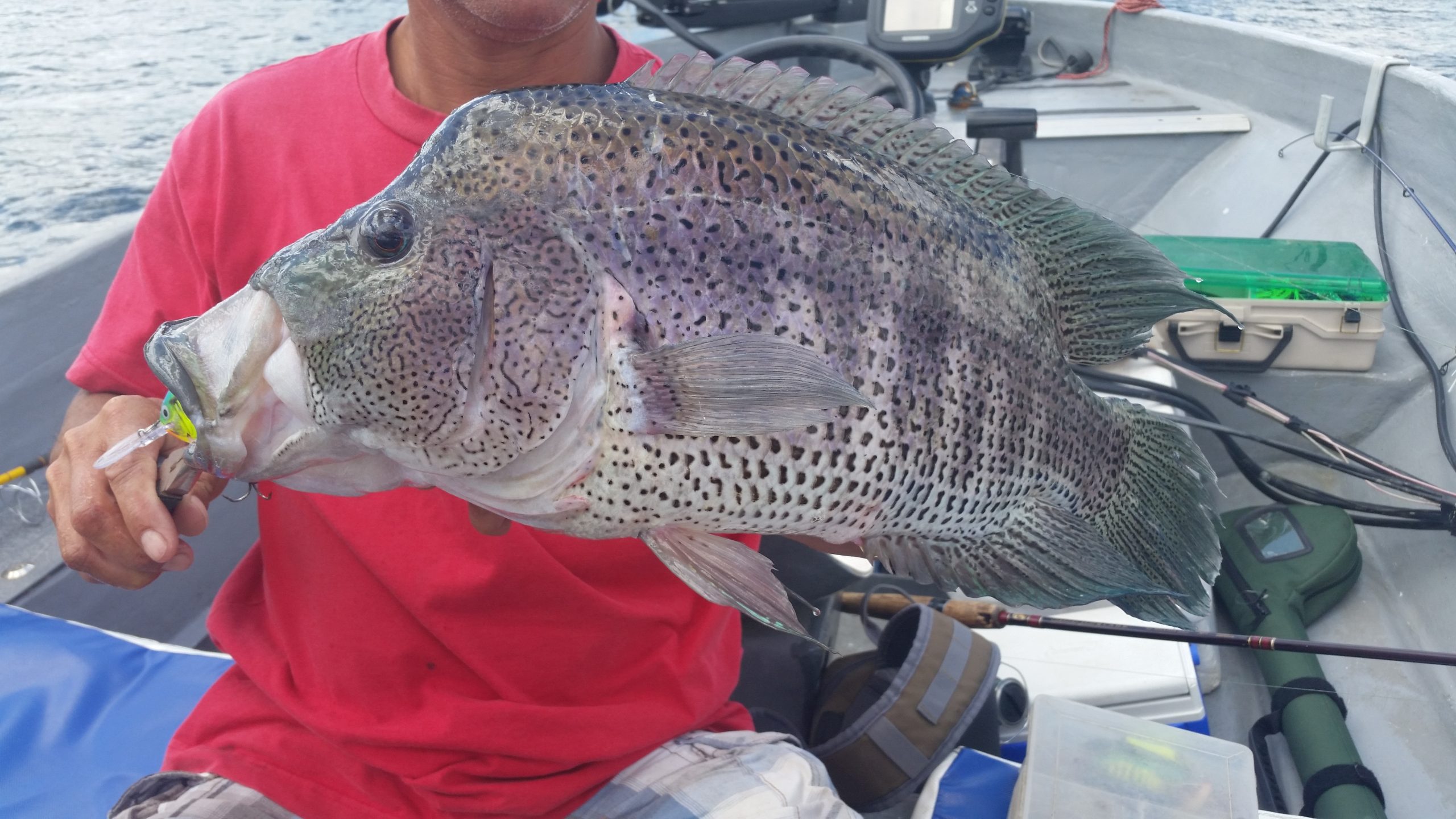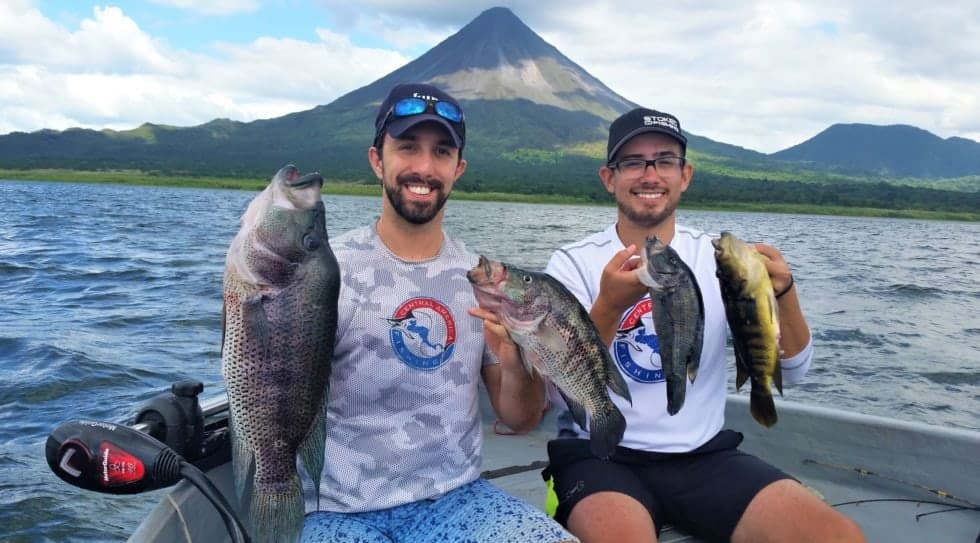Rainbow Bass Fishing in Costa Rica
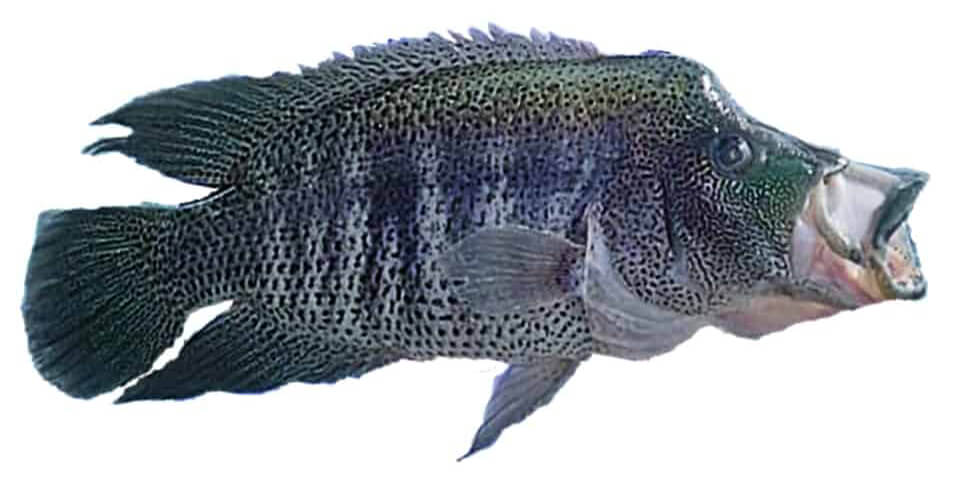
The rainbow bass is the prize game fish found in the freshwater lakes and rivers in Costa Rica. Ticos affectionately call rainbow bass “guapote”, which in Spanish means ‘handsome one’. The reason for all the praise is of course due to their beautiful markings and range of colors. Mature males will display red and green on their heads before turning to a deep purple body that is speckled with blue, black, and purple dots and dark vertical bars. Their fins typically showcase a bluish-green color, which when all put together makes it easy to how it earned its name. Most rainbow bass caught are between 5-10 lbs, but the IGFA world record guapote was actually caught in Costa Rica in 1991 (12 lbs 9 oz), only to be re-broke in 1999 by an angler in Southern Nicaragua (15 lb 0 oz). Although rainbow bass actually do have very soft white meat, we encourage catch and release because they are not as prevalent as in the past.
We should clarify that rainbow bass and jaguar bass aren’t actually bass at all. Like the peacock bass in the Amazon, rainbow bass are actually part of the cichlid family. Both species can feature a prominent forehead bump in the older, larger fish, so if you thought they were funny looking bass that’s the reason why. There are over 2,000 species of cichlids in the world, including 570 found here in Central America and South America. Rainbow bass (Parachromis Dovii) are most often referred to as ‘Wolf Cichlid’ in other parts of the world while jaguar bass (Parachromis Managuense) are called “Jaguar Cichlid”. They were given their ‘bass’ monikers as a way to make an exotic fish seem more relatable, plus how and where we fish for them is awfully similar to bass fishing back on our home waters in North America.
Where To Fish for Rainbow Bass in Costa Rica
The most popular spot to fish for rainbow bass in Costa Rica is Lake Arenal. Costa Rica’s largest lake at 33 sq miles, this man-made lake was created in 1979 when a damn was built to provide hydroelectric power to the region. Locals from two towns were moved as the area was flooded and can now be over 150 ft deep in some spots. Today there is seemingly countless islands, sunken trees, and grassy banks that provide ideal habitat for these ambush predators. Early in the morning the lake is often glass calm, and few things can beat the experience of fishing for the exotic rainbow bass at the base of the towering Arenal Volcano.
The other popular spot to encounter rainbow bass are the freshwater lagoons and rivers along our Caribbean Coast. While most anglers visit this side of Costa Rica to go tarpon fishing, when seas are rough or if you simply want to fish for something new rainbow bass and jaguar bass provide the perfect change of pace. This entire area is comprised of the Tortuguero Conservation Area which covers over 200,000 acres, so this is as wild and untouched as Costa Rica gets. As fun as fishing deep in the can be, it also serves as an incredible wildlife tour as you can see crocodiles, manatee, monkeys, green macaws, and even the occasional jaguar swimming across the canal.
Last but not least, some of the best freshwater fishing in Costa Rican happens up in the remote Caño Negro Wildlife Reserve near the border with Nicaragua. Named as one of the most important wetlands in the entire world, these backwater lagoons and rivers are home to incredible flora and fauna – including great fishing. In addition to the cichlids Caño Negro is a spot where we can find bigger exotic fish like tarpon, snook, and tropical gar.
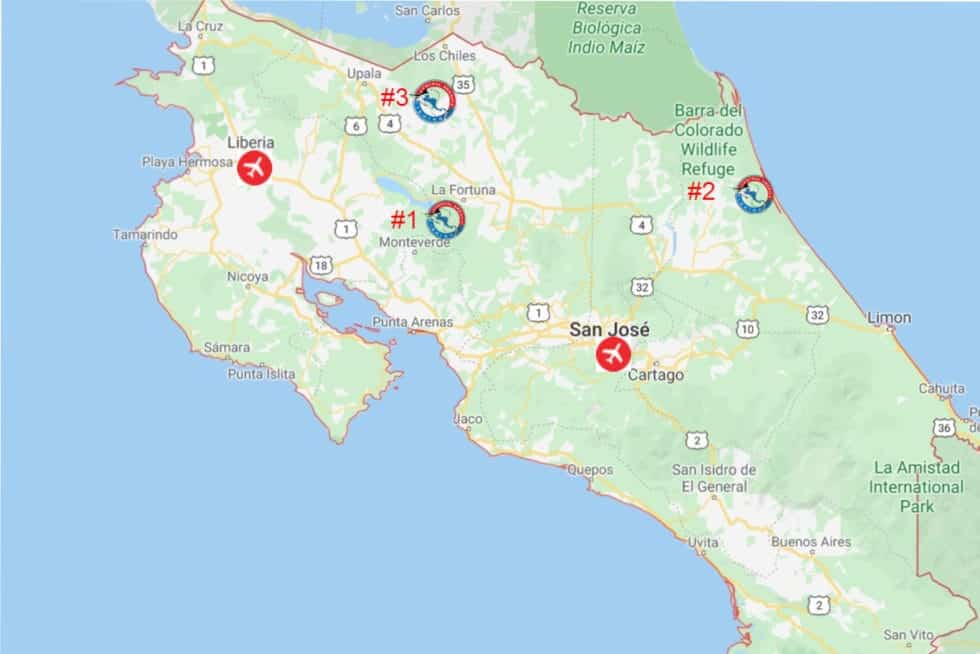
Recommended Tackle & Lures
Rainbow bass are top predators in most rivers and lakes in Costa Rica. With their size, speed, and nasty set of teeth they feed primarily on smaller fish but can also eat frogs and insects. They seem to be most aggressive right before and after spawning but can be rather lazy during nesting.
In the early morning and evening you can catch guapote with crank baits and spinner baits in shallower water near tree stumps, underwater shelves, and grassy areas. Small poppers or even buzz baits can also work well early in the mornings when fishing near weeds or grass lines. On Lake Arenal there are several small river mouths that empty into the lake and that is a great spot to work as well. On the rivers they are often found near the banks underneath fallen trees. Guapote will burrow ‘nests’ into the mud banks around the lake just under the surface of the water, so when water levels drop during the dry season these can be seen and guapote are often found close by. Once the hot tropical sun is overhead they typically move to deeper and cooler water, at which time the biggest guapote are often taken trolling deep diving lures through the coolest spots in the lake. Deep diving bomber lures (16′-20′) will often get you into the strike zone for the bigger fish that are hiding out in deeper water. Bright yellows, greens, and whites seem to elicit the most bites.
A typical bass rig works well for the bass in Costa Rica as well. A 6’6 – 7’6′ rod with a spinning reel or baitcaster will get you plenty of fish. For the jaguar bass and machaca 8#-10# test line will do the trick, but if you are specifically targeting the big mature rainbow bass we actually recommend 20#-30# braided line. Not only do these fish fight hard, they are ambush predators that tend to live in some pretty tight cover so being able to win the first 5-10 seconds of the fight will go a long way to actually getting them to the boat.
We do also enjoy fly fishing for rainbow bass in Costa Rica. An 7wt-8 wt rod is ideal for casting into tight cover and has enough backbone to win the fight. A sinking tip line is often best to get your fly in the strike zone, though early in the morning the fish will hit surface flies as well. Early in the morning you can try poppers or bug patterns, but once the sun starts to rise you’ll have more action with larger streamers and baitfish patterns.
When is the Best Time for Rainbow Bass Fishing in Costa Rica?
Being a freshwater species, rainbow bass are not migratory so we can catch them all 12 months of the year. Especially if you are out on the water early in the morning, there is never a bad time to be fishing for them. That said, Lake Arenal is gigantic at 33 sq miles so the fishing is best when water levels are lower and the fish are more concentrated. This happens in our dry season, or summer months, which are typically January through May/June. Once the water levels rise with the onset of rainy season they simply have more room to spread out and are able to access hard-to-reach places like thick grass and fallen trees which makes them harder to catch.

In Caño Negro the weather seasons are identical but fishing itself is much different because you are fishing wetlands and lagoons as opposed to a 33 sq mile lake. The main lagoon in Caño Negro is fed by several local rivers like the Rio Frio, so during the dry season (Jan-May) the water level drops and the main body of water retreats to form smaller lagoons connected by skinny channels. Again early in the morning the fishing is good every month of the year, but just like Lake Arenal it is better overall in the dry season when the fish are more concentrated due to lower water levels. Caño Negro is closed to fishing from April 1st to June 30th due to the spawning season of the protected tropical gar.
On the Caribbean Coast the best months to try freshwater fishing mimic the best months for tarpon and snook fishing: mid-January through mid-May and then again in September and October. That is the traditional dry season on the Caribbean when you are most likely to have sunny weather and lower water levels.
Rainbow Bass Fishing Packages
Below you can check out three sample packages to experience the best rainbow bass fishing in Costa Rica. You can spend an entire week freshwater fishing in Costa Rica, or very easily combine a couple of nights at the Arenal Volcano with several nights along the coast so you can enjoy the beach and some saltwater fishing as well. Once you contact us we will customize your own private itinerary to include exactly what you want.
